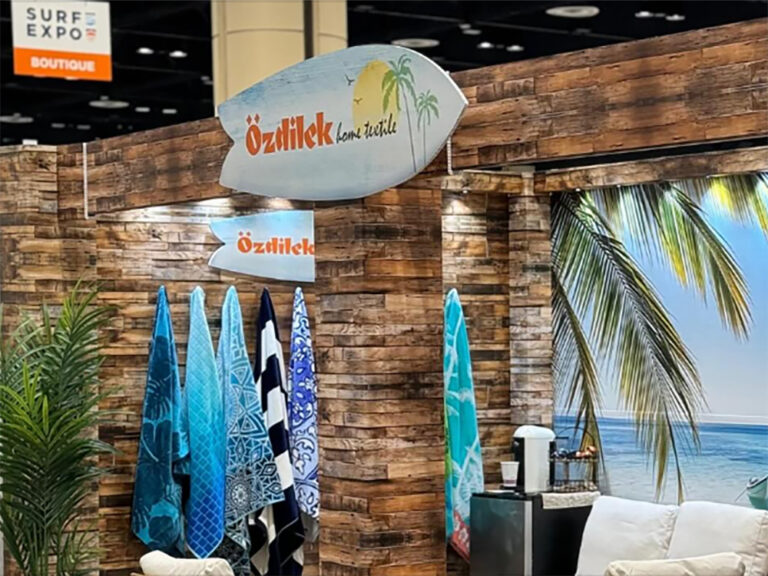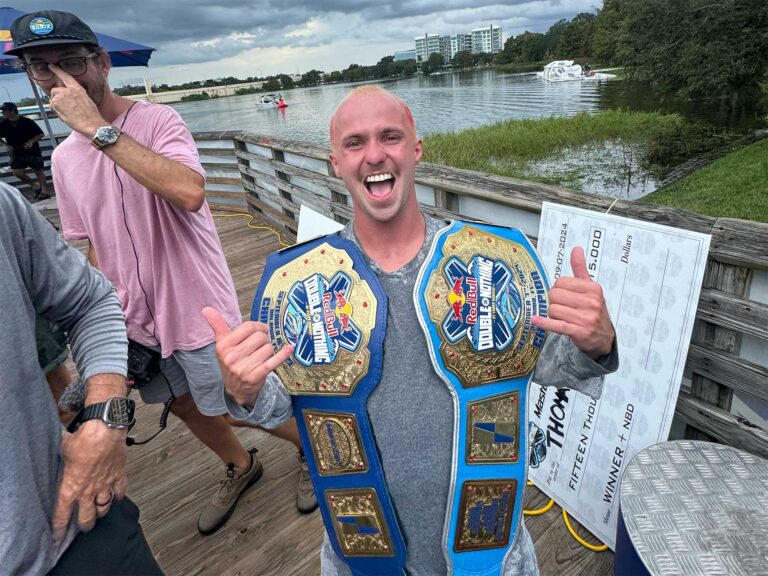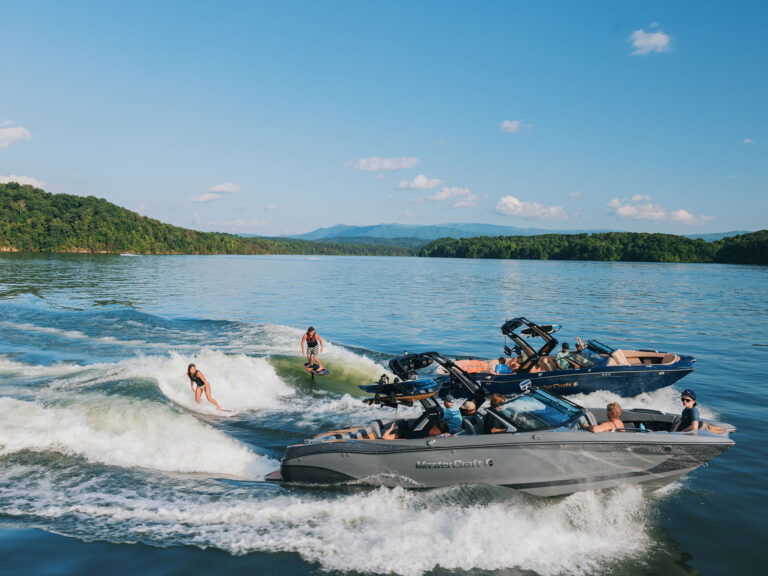The biggest name in wakeboarding isn’t someone who’s been in every single wakeboarding video since 1993. And the biggest name in wakeboarding isn’t someone who’s been in every single WBM issue since 1993 either. But whether you know it or not, he’s been there, behind the scenes, shaping the direction of our sport since before you knew what a wakeboard was. Since 1985, when he created Redline Designs, Jimmy Redmon’s been the trend-setter in wakeboard design. Since 1990 when he co-created the World Wakeboard Association, Redmon’s been the primary force surrounding the development of amateur wakeboarding. And since 1992, he’s been the chief judge on the pro tour, determining who the sport’s biggest and best stars are and are going to be. So, it really doesn’t matter that you haven’t seen him on these pages, or in the videos – what matters is that he’s been there all along.
So where did this whole thing start? You, wakeboarding, shaping …
As a kid, I always wanted to make things; I would make my own skateboards and went through that whole trip, competing on skateboards and all that. And then I met these guys next door who were making surfboards in their garage. I didn’t find out until years later when I was in a trade show in California – but one of those guys was Ken Bradshaw. Anyhow, I was captivated by it and wanted to do that more than anything, so when I got into surfing and got my own boards, I just started working on my own stuff. I eventually got a job after school working in a shop, fixing dings and stuff like that, and I shaped my first board at 17. It wasn’t until I moved to Austin to study architecture that I first went water skiing, and all I kept wanting to do was drag a hand, do bottom turns and go off the lip. So I started thinking, went back to the factory, and shaped a little board. First ride, I hit the lip and just launched into the air. That board only lasted about 45 minutes but by then I was hooked.
Then what?
Well, I went back the next weekend, made another board, glassed it stronger, and it lasted two hours. And what happened is every time I would go out riding these things, people would stop and go, “Whoa! That’s killer. Where can I get one?” So I started making boards by hand for some locals. Basically it got to a point where I felt like, if I’m in my 30s sitting in some architect’s office and this is a huge sport, I’m going to kick myself. I didn’t want to have one of those regrets, so I came home one weekend with 205 hours in college and announced to my folks that I was going to make wakeboards ’cause it was going to be a sport one day. And that’s where Redline Designs started.
Why isn’t Redline still around today?
We couldn’t make a profit. At the time, the only other board out there was the Skurfer, but it was $100 cheaper, not as good, but that really didn’t matter. Nobody knew what a wakeboard was anyway.
Is that when you first met Tony Finn?
Yes. He actually gave me a backhanded compliment one day. He came up to our booth at a show and was looking at our boards and said, “Not bad.” I turned around and said, “What do you mean, not bad? They’re better than yours.” And he said, “You’re right, but the market’s not ready for your board yet.” And he was right.
So when did you two finally team up?
Well, even though Redline went under, I still wanted to stay involved in whatever was going to happen, and there was a need to get a way to judge people that wasn’t totally like trick skiing, so we started putting together rules for local contests – that’s were the idea ffor the WWA came from. Then in ’91, the water-ski tour called and asked me to judge a contest they were going to have. (They wanted to see if wakeboarding would work on the pro tour.) Finn was there doing some em-ceeing, but what was funny was that neither one of us were involved with making wakeboards at that time (I was doing Sano and he was doing some golf thing), and I remember I got out of the boat at the end of the day and I said to him, “Are you thinkin’ what I’m thinkin’?” and he said, “Yeah, man, this sucks. We started this thing and here we are pumping it up for someone else.” And I said, “Well, what are we going to do about it?” He told me to start working on designs and he’d find somebody who wanted to make wakeboards, and that’s what he did.
What I want to know is, where do your ideas come from?
Hmmm … anywhere and anything really. First, and the most obvious, is watching wakeboarding – seeing what works, figuring out why someone fell, hearing people’s comments, stuff like that. A lot of ideas come from surfing, trying different boards and from snowboarding, feeling how the edges and rails work; a lot of them just come from playing with a garden hose on a prototype. It’s just thinking like water, thinking what do you want it to do and how you are going to make it happen.
So you’ve got a lot of things going on here: chief designer at Liquid Force, president of the WWA, chief judge on tour … you’re spread pretty thin.
(Laughs.)
Do you see yourself staying in the
judging role?
As in, do I want to stay in the boat forever and have everyone that doesn’t win come to me all bummed out? No. But if my involvement can keep things moving forward and maintain the need for flexibility – what is wakeboarding this season, what didn’t work last season, what’s a fair and equitable way to determine point values – then yeah, I’ll stay in it. The thing that’s cool about judging is seeing someone go out there and really rip, put it all together when the pressure’s on. That’s pretty cool. When you see a little teeny kid get up for the first time, just the stoke on his face is amazing. Wow, if you could just bottle that excitement. … If I gave up judging, I wouldn’t have that perspective anymore. And that’s probably the biggest kick I get out of wakeboarding. Just thinking that I had something to do with making someone smile, I know it sounds like a cliche, but it’s all worthwhile.







